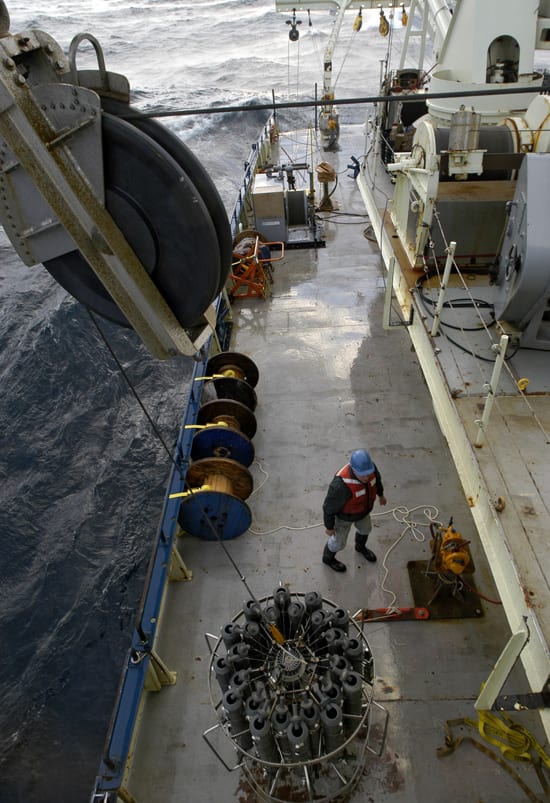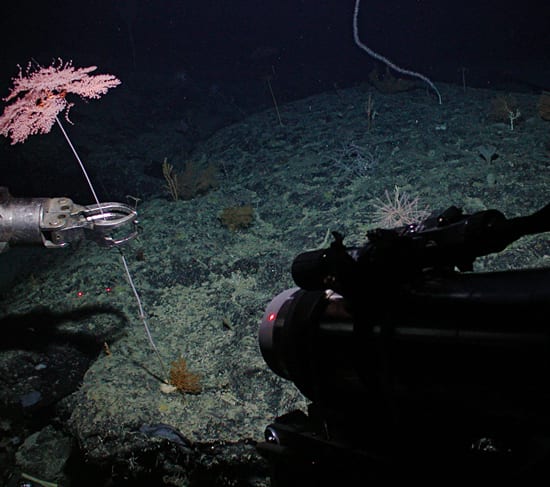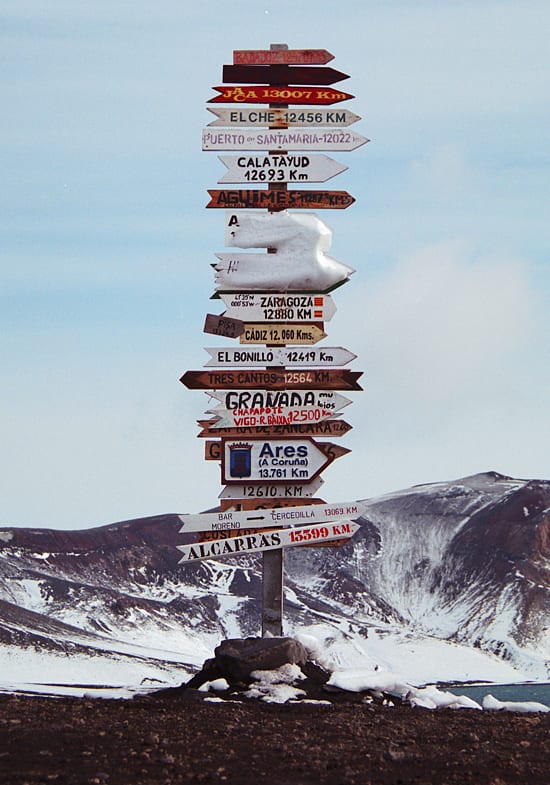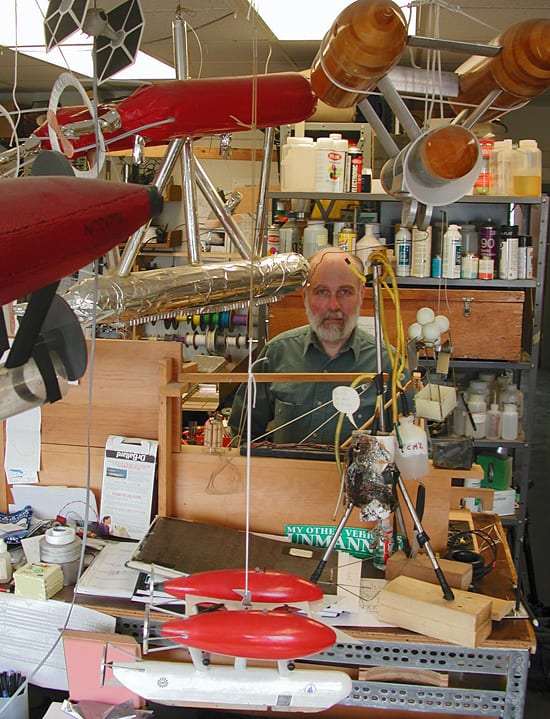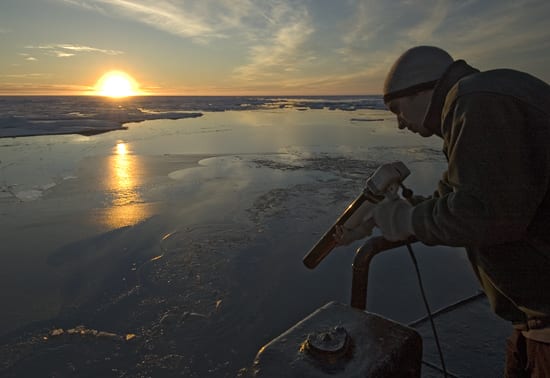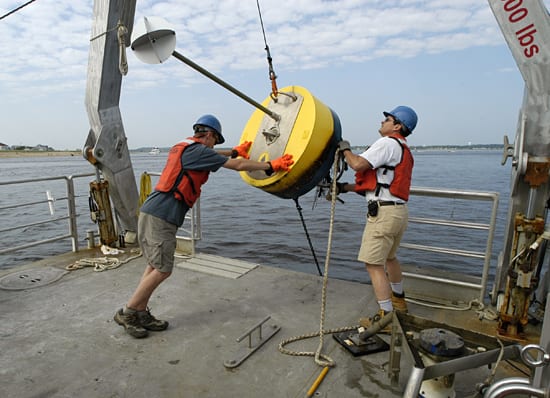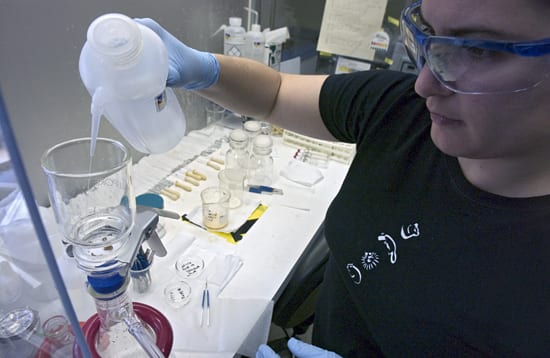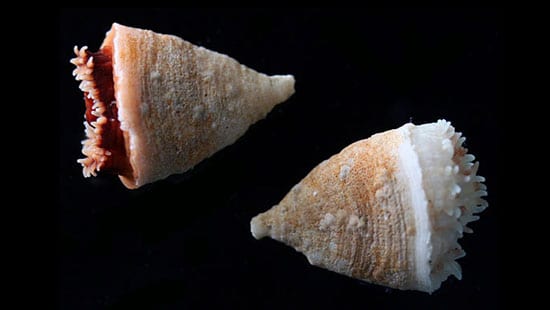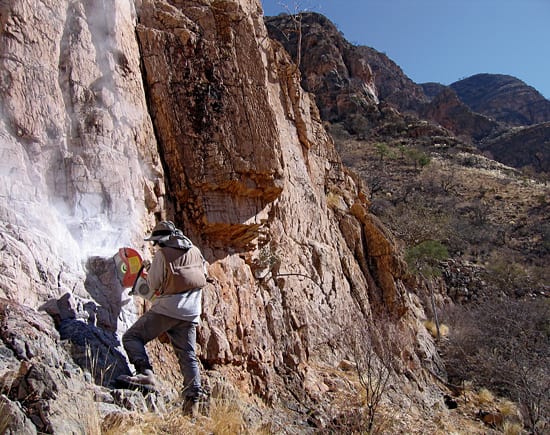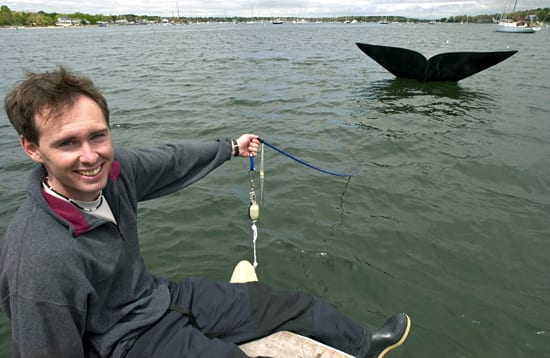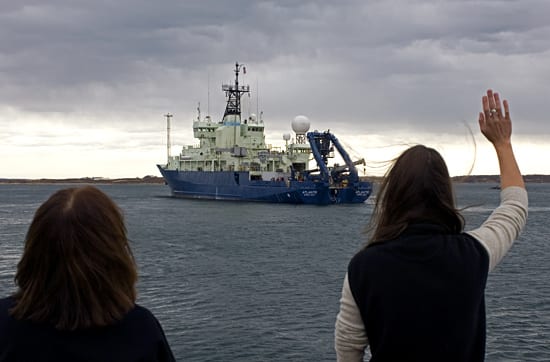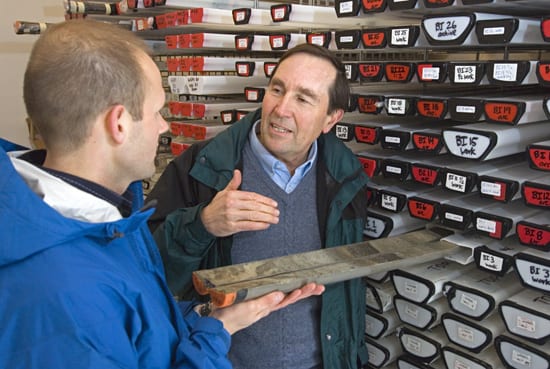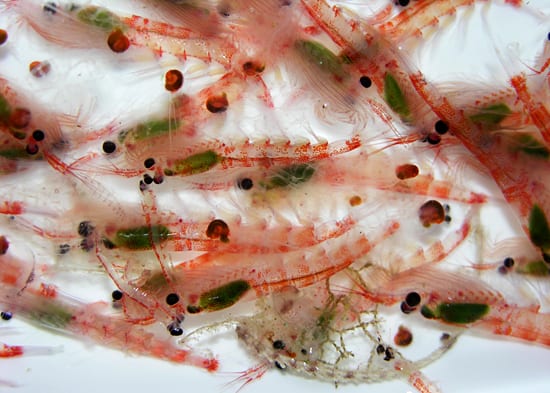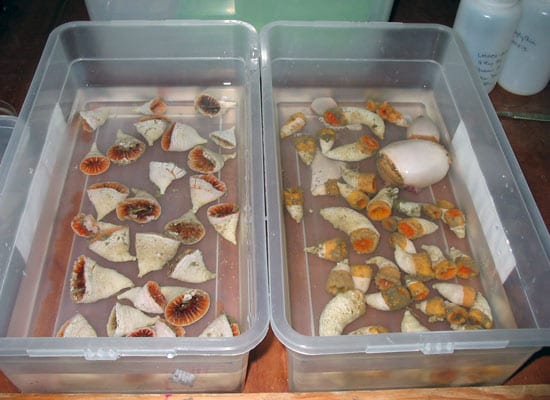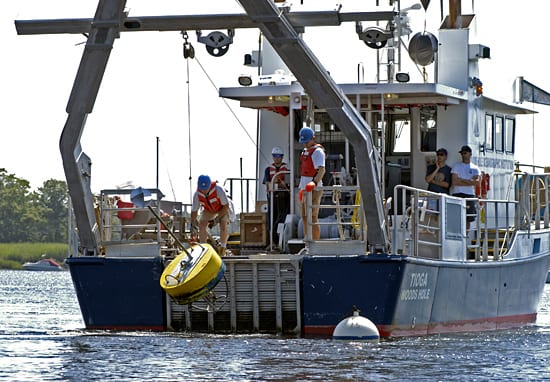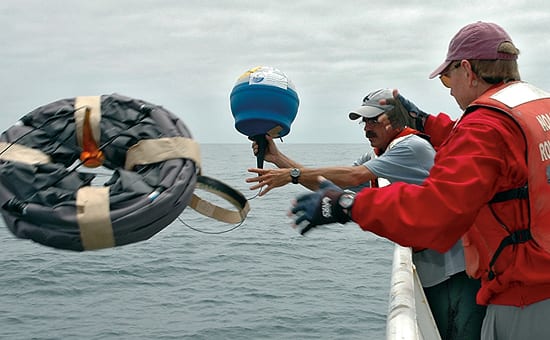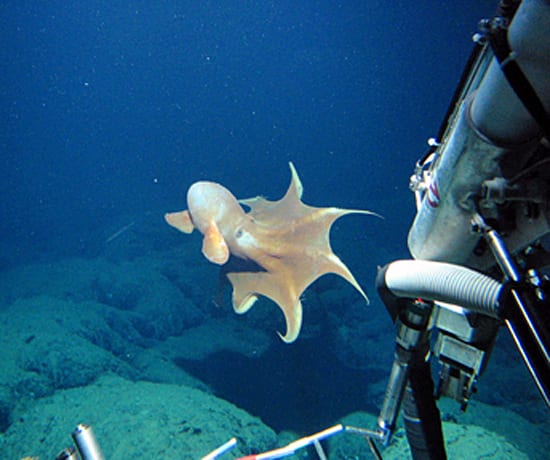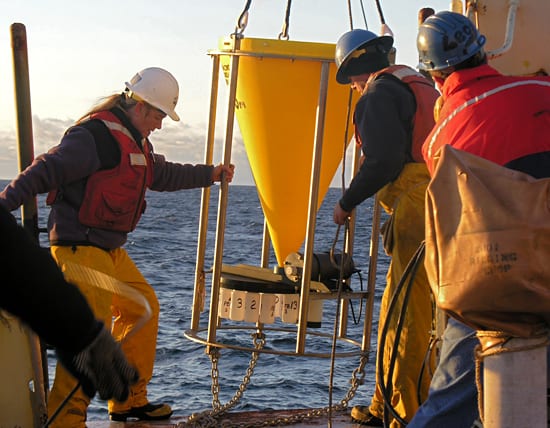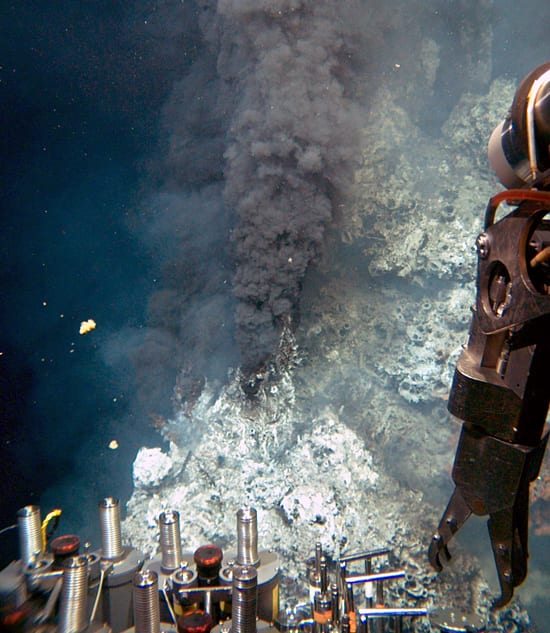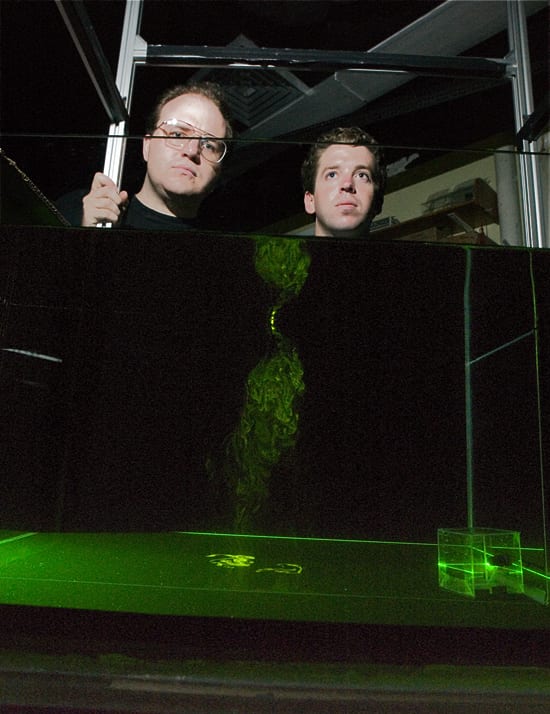Multimedia Items
Carbon Kitchen
Panorama of the sample preparation lab for radiocarbon dating at the National Ocean Sciences Accelerator Mass Spectrometry Facility (NOSAMS) at WHOI. An addition completed in 2004 houses a newly designed…
Read MoreSurveying the Shelf
A CTD (bottom) with rosette for conductivity/temperature/depth measurements is readied for deployment from R/V Oceanus during a winter 2005 cruise to study circulation in continental shelf and slope waters north…
Read MoreSeafloor Garden
DSV Alvin’s manipulator collects a sample of coral during dive 3904 to the Kelvin Seamount off New England in July 2003. A video camera is visible at right. Scientists observed…
Read MoreWhich Way??
A polar signpost on the Western Antarctic Peninsula provides an unusual reference point for scientists working in and around the continent in February and March 2003. (Photo by Woods Hole Oceanographic Institution)
Read MoreOcean Toymaker
Amidst various models of the Autonomous Benthic Explorer (ABE), engineer Al Bradley has designed numerous instruments and vehicles. The autonomous underwater vehicle ABE and its successor Sentry are two of…
Read MoreSun and Sea
Will Burt launches an XCTD (Expendable CTD), used to measure conductivity, temperature and density, during the Beaufort Gyre Freshwater Experiment in the Arctic Ocean in 2005. (Photo by Christopher Linder,…
Read MoreSteady Hands
Postdoc Dave Ralston and Jay Sisson aboard coastal vessel Tioga recover a surface buoy from the Merrimack River. The round object at the top of the buoy is a radar reflector. (Photo by James…
Read MoreA Pirate’s Prize
Researchers at the National Ocean Sciences Accelerator MassSpectrometry Facility at WHOI prepare samples of wood from the wreck of pirate Blackbeard’s flagship Queen Anne’s Revenge for radiocarbon dating to determine its…
Read MoreCorals Under Ice
Sawing for Samples
Bernhard Peucker-Ehrenbrink used a saw to collect samples of 635-million-year-old rocks from the iridium boundary in a cliff in the Hoanib Valley in Namibia. He is using geochemical tracers to detect the…
Read MoreA Whale’s Tail
Jeremy Winn (University of Maine) harnesses a fiberglass replica of a right whale’s tail during tests with WHOI scientists in Marion Harbor, Mass. Scientists are trying to find ways to…
Read MoreOff to Sea
R/V Atlantis departs on another voyage from the Woods Hole dock in April 2006. The vessel is often at sea away from home port for several years, with each leg…
Read MoreThe Old Days
Sybil Campbell worked at WHOI from 1954 to 1960 as a research assistant with geochemist Vaughan Bowen. Bowen brought nuclear studies to WHOI, with research projects to detect the presence…
Read MoreMuddy Mysteries
MIT/WHOI Joint Program student Jon Woodruff (left) and Senior Scientist Don Anderson examine a sediment core sample from the Caribbean island of Saint Kitts for a study using coastal flood deposits…
Read MoreDinner Time
The most abundant zooplankton in Antarctic waters are Antarctic krill (Euphausia superba), a focus of Dive and Discover Expedition 10. These two-inch long pink crustaceans are the main food source…
Read MoreTo the Rescue
Deep Ocean Work Boat (DOWB), launched from R/V Lulu, was used to search for Alvin after it sank in late 1968 south of Nantucket when a cable on Alvin’s launch…
Read MoreCorals Under Ice
Corals Under Ice
Up It Comes
Stern view of the RV Tioga during a mooring recovery on the Merrimack River. (Photo by James Kent, Woods Hole Oceanographic Institution)
Read MoreOver the Side
WHOI’s Paul Bouchard and NOAA Teacher At Sea, Eric Heltzel, launch adrifter during a 2005 cruise. Drifters are used to track surface currents and can be launched from ships or…
Read MoreHello There!
An octopus comes to see what the submersible Alvin is doing during Dive and Discover Expedition 9 to the Galapagos Rift in 2005. (Photo by Bruce Strickrott, DSV Alvin pilot,…
Read MoreCatching Carbon
Deploying a sediment trap from R/V Oceanus in the Gulf of Maine. The instrument collects sinking particles on a pre-programmed schedule and measures the export of carbon and other geochemical…
Read MoreHoly Smokes!
Chimney-like structures called black smokers emit superheated water full of minerals from the seafloor. First discovered in 1979 in the eastern Pacific, they have since been found around the world,…
Read MoreTo Dye For
Assistant Scientist Jason Goodman and Summer Student Fellow Daniel Carlson conduct a dye experiment in the Geophysical Fluid Dynamics Lab at the Coastal Research Laboratory. (Photo by Tom Kleindinst, Woods…
Read More

